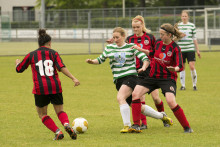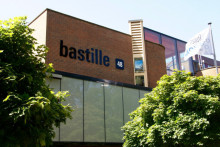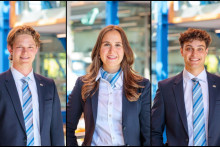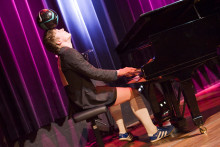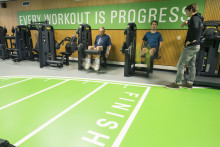How are sports and culture associations dealing with the corona regulations?
‘We want students to be able to exercise well and safely. We have put a lot of effort in developing guidelines together with the sports associations and the Sports Centre. It’s about how to safely use the changing rooms and to manage only a select number of persons per sports hall. A different approach than usual of course, but it is the best way to keep sport activities running as normal as possible.’
‘Regarding the culture associations, some creative solutions have been developed to ensure that activities can continue either physically or remotely. Apollo works together with Vrijhof Culture and Events so that the culture associations are able to stay up and running. Some associations are hosting virtual rehearsals, for example. They have also looked into options for livestreaming performances. In short, a lot of effort is put into making everything easier, safer, and accessible for everyone.’
What about real-life trainings and try-outs?
‘On outside sport fields it is not required to keep 1.5m distance from other players. Players are allowed to do their trainings the usual way, granted that they leave the field as soon as the match has ended. Kronos already organised an NSK (Dutch student championship, ed.) and Piranha already started hosting matches, but not more than four per day and only with local sports associations.’
‘The try-outs prove to be successful this year. During the Kick-In, a lot of emphasis has been put by associations on promotion, especially by the sports associations. Most sports associations currently host more try-outs than previous years, to ensure more students can join.’
Are sports and culture associations gathering enough members this year?
‘We expect the number of members to stay similar to last year, if not slightly higher, especially at the sport associations. We notice that sport associations have grown during the last few years, so we predict the same trend this year. Regarding the culture associations, we predict a similar number of members to previous years. We do not believe that the number of members will decrease this year in either sector.’
Why is that?
‘Probably because sports and physical exercise are close to many people’s hearts. Culture associations usually tend to have a smaller support base compared to the sports associations, which explains why we do not predict such significant increase in their members per se. However, I can also imagine that students want to distract themselves from their studies now more than before. If most or all of their classes are provided online, students might find it difficult to explore campus life or to make new friends, especially first-year students. This might encourage them to join extracurricular associations to get to know the environment better.’
How do you envision the future for sports- and culture associations?
‘Because the academic year has only just started, we are not entirely sure right now. In a few months we might have a better overview about possible issues. In any case, I can say that this year’s subsidy regulations for associations are more flexible than previous years to ensure that associations are able to stay alive. Either way, we are trying all we can to make this happen. All in all, we have a positive outlook for the future of the associations regardless of the stricter measures. Current times are unique, of course, but we are motivated to make the best of it.’


